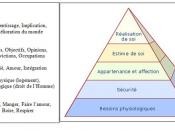1.Q:- What is the difference between Motivation & Job Satisfaction?
Ans:-
MOTIVATION:-
It is the process that concerns the factors, but influences the direction, intensity, and persistence of behavior.
Expanding effort for an organization's and satisfying individual needs.
The three key elements in Motivation are, Intensity, Direction, and Persistence.
Intensity is concern with how hard a person tries. This is the element basically focused on how we talk about Motivation. High intensity is unlikely lead to favorable job performance outcomes unless the effort is channeled in a direction, that will benefit the organization. Therefore we have to consider the quality of effort as well as its intensity efforts, that is directed towards and consistent with the organization's goal.
Finally, Motivation has a persistence dimension. This is a measure of how long a person can maintain the efforts.
There are both of theories that emphasize on Motivation. Each theory has its own strength and goal.
The characteristics of X-theory are mainly Need theory, Goal setting Theory, Reinforcement theory, and Equity Theory.
The goal of Need theory is to make relationship between achievement and productivity, where as Goal setting Theory emphasize an individual's goal that tends to higher level of employee's productivity.
JOB SATISFACTION:-
Its an employee's attitude ( positive/ negative ) about the job. Three attitude components are, Belief, Behavior, and Affect.
The term Job Satisfaction refers for an individual's general attitude towards his or her job. A person with a high level of job satisfaction holds positive attitude about the job, while a person who is dissatisfied with the job, holds negative attitudes about the job. Job Satisfaction represents an attitude rather than a behavior.
Job Satisfaction has become a primary dependent variable for two factors or reasons- its demonstrated relationships to performance factors and the value...


